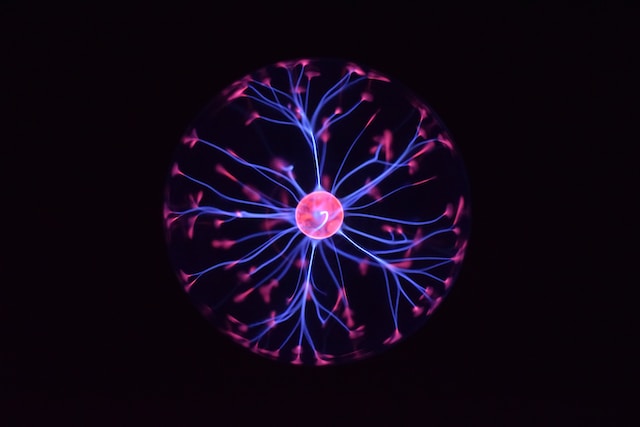You might think that brain implants are a futuristic technology, but the truth is they are already here. In fact, they’ve been around for several years. A few dozen people who have suffered a debilitating loss of movement or bodily motion after accidents, or with certain medical conditions, already have small electronic devices linked to computers implanted in their brains. These implants help them carry out basic tasks, and also provide researchers in the US and other countries with a wealth of information on how this technology can be upgraded and improved.
But not everybody with an implant in their skull has done it for medical reasons. There are people like Neil Harbisson, a cyborg artist who has an antenna implanted in his skull that helps him ‘see’ colors in the form of musical notes; while his friend, Moon Ribas, has sensors implanted in her feet that track the seismic activity of the earth. Harbisson and Ribas like to call themselves trans-species activists and are pushing the boundaries of how humans interact with technology. The duo are founders of an advocacy group that focuses on cyborg-related issues.
Ever since Tesla boss Elon Musk decided to launch an ambitious venture called Neuralink, brain implants and their possibilities have entered the popular imagination. It also helps that Musk, the world’s richest man, has a massive following on Twitter. The company aims to make high-bandwidth brain implants to help people with paralysis and eventually invent new technologies “that will expand our abilities, our community, and our world.”

Neuralink is hardly the only start-up working on brain implants, but thanks to Musk’s larger-than-life persona, it is certainly getting the most attention. Musk, who co-founded Neuralink in 2016, has claimed that the technology will enable someone with paralysis “to use a smartphone with their mind faster than someone using thumbs.”
Brain implants — the power of the mind
In 2017, Dennis Degray, who was paralysed from the shoulders down, sent a text message to a friend that might have been “the very first text message ever sent from the neurons of one mind to the mobile device of another.”
A year earlier, Degray had electronic silicon devices called Utah arrays surgically implanted in his brain’s motor cortex, the part responsible for controlling movement. He only had to imagine he was moving a joystick with his hand and the device did the rest—it moved a cursor and selected the relevant letters on a computer screen.
Degray, who was 64 when he sent that text message, is a participant in a multi-institution research programme in the US called BrainGate, which seeks to provide a semblance of independence to people suffering from paralysis, neurodegenerative disease, or loss of a limb.
Similar Utah arrays were surgically implanted in Nathan Copeland, who was paralysed after a car crash. Copeland, who was already playing video games thanks to the implants, famously challenged a monkey with a Neuralink device implanted in its skull to a game of Pong—which was dubbed by the media as the first-ever man vs. monkey mind game in history.
The research on brain implants has produced promising results in a number of experiments. In one demonstration, a team at the University of California, San Francisco (UCSF) implanted a high-density electrode array in the sensorimotor cortex of a 36-year-old man who had a stroke and could not form intelligible words. After the procedure, he managed to form words on a computer screen at a rate of around 15 words per minute.
What is Neuralink?
To put it simply, Neuralink is a brain implant start-up which hopes to develop credible electronic devices that can be controlled using our minds. This might sound like science fiction, but Musk’s ambition is not merely to create implants that help people with medical needs but also to change the very meaning of human communication.

The tech is already being tested on animals like pigs and monkeys, and tests on humans are the next frontier. Eventually, Musk believes it could be used by perfectly healthy people to express themselves creatively and tremendously expand the scope of the mind by giving it access to limitless digital information in a form that is coherent, useful and actionable.
These implants or brain-machine interfaces record the electrical firing of neurons in the brain’s motor cortex. The firing rate of a neuron has information about the movements the person is making or merely imagining. These signals are then translated by a decoder program into a command which, in turn, is sent to a computer cursor.
But there is a crucial difference between most existing brain implants and Neuralink’s devices. People who have agreed to get these implants surgically installed in their brains usually have cables physically attached to their skulls. Neuralink’s implants, on the other hand, are wireless and transmit brain recordings through a system like Bluetooth.
The Neuralink implant, so far used only in animals, also records more neurons than devices like the Utah arrays, which are already being used in humans.
Challenges and opportunities
Neuralink and other start-ups specializing in brain implants are a long way from delivering that bold future of seamless brain-digital connectivity. It hasn’t been a glitch-free ride. Neuralink has had to defend itself against allegations of animal abuse during the testing of its products. But the Silicon Valley company is going ahead with its plans to start clinical trials in humans; specifically, it will be initially used on volunteers with severe spinal cord injuries, subject to approval by America’s Food and Drug Administration.
Neuralink reportedly uses electrode-studded biocompatible polymer material in the form of very thin threads that avoid piercing of the micro-vessels. This is supposed to reduce scarring and increase the device’s life. Musk has specified that the procedure to implant the device, which will be carried out by a robot, is akin to laser eye surgery rather than complicated brain surgery.
But concerns remain. It is not clear if scarring can be considerably reduced. Also, how long will the electrodes and polymer probes last in the body?
That being said, setbacks are unlikely to stop Neuralink from pushing the boundaries of neural implants or the brain-computer interface. Musk’s long-term aim is driven by the fear that humans will be left behind by Artificial Intelligence (AI), and he is hoping to pre-empt that possibility by creating a technology that leads to a merger with AI.
Not surprisingly, there are many issues linked to privacy, ethics and safety involved when people’s brains are connected to dynamic digital information databases like the internet. It’s a world where the possibilities are astonishing but it is also hard to fully comprehend that world at this stage. However, in the near future, if the FDA gives its approval for human trials, Neuralink would have taken a significant step in bringing humans closer to AI.














